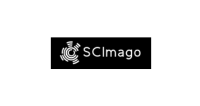SUBSTITUTING SORGHUM GRAIN WITH CRUDE GLYCEROL IN DIETS FOR BEEF CATTLE
DOI:
https://doi.org/10.5380/avs.v24i1.60403Palavras-chave:
biodiesel, byproduct, energy, feedlot, NeloreResumo
The expansion of the biodiesel industry has created opportunities for crude glycerol use in beef cattle diets. The objective of this study was to determine the effects of substituting sorghum grain with crude glycerol on dry matter intake (DMI), growth performance and feed intake pattern of 28 non-castrated Nelore males with initial body weight (BW) of 441 kg and 21.5 months of age housed in individual or collective pens. Crude glycerol was included at 15% of the ration dry matter as a replacement for sorghum grain. Orts were collected and weighed daily, and DMI was calculated by difference between feed offered and feed refused. Feed intake pattern was determined every two weeks after the beginning of the study in three intervals relative to feed delivery (0-4, 4-10, and 10-24 hours post-feeding). Animals’ BW was obtained on days 1, 14, 28, 42, 56, 70, and 84 days of the trial after a 12-hour solid fasting. Crude glycerol did not alter (P>0.05) DMI, growth performance, hot carcass weight and dressing percentage compared with the control diet. A treatment × days of experiment response (P<0.05) occurred due to a decreased DMI in animals fed crude glycerol during the first 14 days of the trial. Crude glycerol-fed animals decreased (P<0.05) the NDF intake pattern in individual and collective pens. Crude glycerol can be used as a substitute for sorghum grain in beef cattle diets.
Downloads
Publicado
Como Citar
Edição
Seção
Licença
Autores que publicam nesta revista concordam com os seguintes termos:
- Autores mantém os direitos autorais e concedem à revista o direito de primeira publicação, com o trabalho simultaneamente licenciado sob a Creative Commons - Atribuição 4.0 Internacional que permite o compartilhamento do trabalho com reconhecimento da autoria e publicação inicial nesta revista.
- Autores têm autorização para assumir contratos adicionais separadamente, para distribuição não-exclusiva da versão do trabalho publicada nesta revista (ex.: publicar em repositório institucional ou como capítulo de livro), com reconhecimento de autoria e publicação inicial nesta revista.
- Autores têm permissão e são estimulados a publicar e distribuir seu trabalho online (ex.: em repositórios institucionais ou na sua página pessoal) a qualquer ponto antes ou durante o processo editorial, já que isso pode gerar alterações produtivas, bem como aumentar o impacto e a citação do trabalho publicado.













